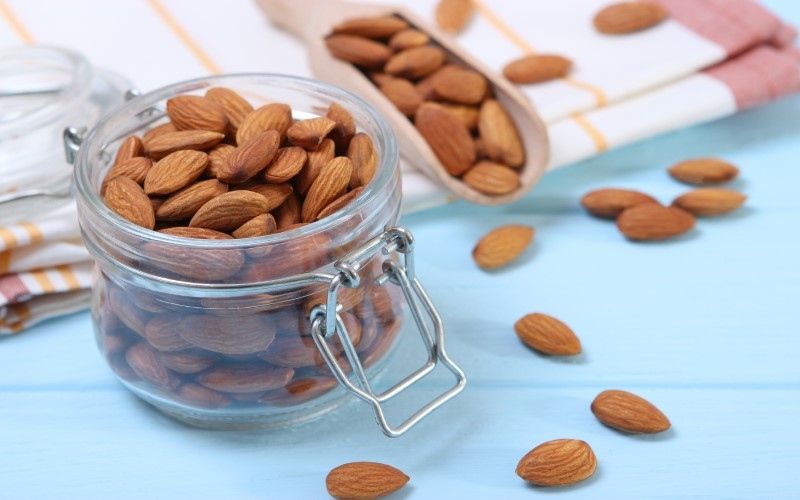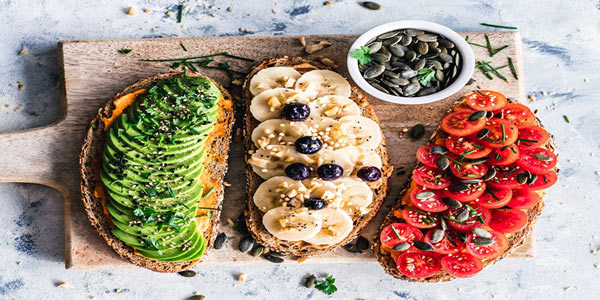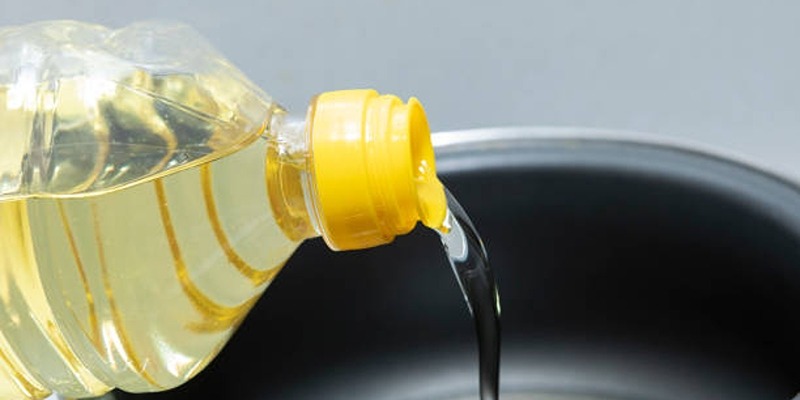Whether you snack on them, toss them into salads, or blend them into smoothies, almonds are a versatile and nutritious addition to your diet. However, the key to unlocking their full potential lies in how you store them. Let's delve into the almond storage and preservation world to ensure you're getting the most out of these delightful nuts.
The Basics of Almond Storage
Almonds, rich in healthy fats, protein, and essential nutrients, are a valuable part of a balanced diet. To reap their benefits fully, it's crucial to preserve their freshness. Stale or rancid almonds compromise taste and may lack the nutritional punch you expect.
However, here are some basics of almond storage that you should know about:
Choose the Right Container
When preserving the freshness of your almonds, the container you choose plays a crucial role. Opt for airtight containers to create a protective barrier against moisture and air. These containers help maintain the ideal environment, preventing the nuts from turning stale or rancid over time.
Cool and Dark
The environment in which you store your almonds matters. Aim for a cool, dark place away from direct sunlight, such as a pantry or cupboard. Exposure to sunlight can lead to accelerated deterioration and compromise the taste and texture of your almonds. Shield them in a shaded spot to preserve their natural goodness.
Refrigeration Myth
While the idea of refrigerating almonds might seem intuitive, it's a common misconception. Refrigeration introduces moisture, which can adversely affect the texture of almonds, making them rubbery. To maintain optimal freshness, stick to storing your almonds in a cool, dry pantry. This simple adjustment can make a significant difference in extending the shelf life of your almonds without compromising their quality.

Almond Preservation Techniques
Let's now explore a set of practical preservation techniques. From freezing almonds to dry roasting and blanching, these methods not only contribute to extending shelf life but also add delightful nuances to the flavor and texture of your almonds.
Freezing Almonds
Extend the life of your almonds by embracing the simple yet effective freezing technique. Place almonds in a sealed bag, ensuring they are completely dry to prevent freezer burn. Freezing preserves their freshness and adds a delightful crunch to your almonds when you're ready to use them. This method is particularly handy for those who prefer to buy almonds in bulk, providing a convenient way to maintain a constant supply of fresh nuts.
Dry Roasting
Take your almond game to the next level by exploring the art of dry roasting. This method not only enhances the flavor, adding a delightful crunch to your almonds, but it also serves as a means to remove excess moisture. Dry-roasted almonds make for a tasty and nutritious snack on their own, or they can be a flavorful addition to various dishes, bringing a unique texture and depth of flavor.
Blanching
Blanching is a versatile technique for those seeking a softer texture in their almonds. Briefly immerse the almonds in boiling water, then transfer them to ice water. This process helps loosen the skin, making it easy to peel off if desired.
Blanched almonds are excellent for recipes requiring a smoother consistency, such as almond butter or almond flour. This technique opens up a world of culinary possibilities, allowing you to experiment with different textures in your favorite almond-based dishes.
Signs of Spoilage
Now that we've covered the proactive measures to keep your almonds fresh, let's focus on recognizing the signs of spoilage.
Off Smell
One of the primary indicators of spoiled almonds is an off-putting odor. Fresh almonds should have a pleasant, nutty aroma. If you detect a bitter or rancid smell, it's a clear signal that the almonds have passed their prime. Trust your sense of smell as a reliable guide to assess the quality of your almonds.
Discoloration
Visual cues can also provide insights into the freshness of your almonds. Fresh almonds typically have a light tan color. Keep an eye out for any dark spots or a dull appearance, as these may be indications that the almonds are past their prime. Discoloration can be a key visual cue that prompts you to assess the overall quality of your almond stash.
Taste Test
Perhaps the most straightforward method to determine almond freshness is through a taste test. If your almonds taste off or have a strange aftertaste, it's a clear sign that they're no longer at their best. Trust your taste buds, as they are excellent detectors of any undesirable changes in flavor. A fresh, nutty taste is what you should always aim for.
Keeping Almonds Fresh for Longer
Now that we've explored the foundational principles of almond storage let's delve into advanced techniques that go the extra mile to preserve the freshness of these nutritious nuts.
Vacuum Sealing: For extra protection against air and moisture, consider vacuum-sealing your almonds. This method is particularly effective in extending the freshness of your almonds, ensuring that they maintain their flavor and nutritional value for an extended period.
Avoid Mixing Flavors: Almonds are like flavor sponges, absorbing the scents of the surrounding environment. To preserve their original taste, store almonds away from strong-smelling foods. This small precaution can make a big difference in maintaining the integrity of your almonds.
Rotate Stock: Adopt the "first in, first out" principle when consuming almonds. By using older almonds before reaching for fresher ones, you ensure that none goes to waste and that you always enjoy the freshest nuts in your stash.

Conclusion
In almonds, freshness is the key to unlocking their nutritional goodness. By understanding proper storage techniques and preservation methods, you can savor the taste and reap the benefits of these tiny powerhouses. Whether you're a snacker or a culinary enthusiast, taking care of your almonds ensures they remain a delightful and healthy addition to your daily routine. So, are you storing your almonds safely?







